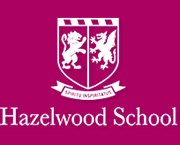
War Memorial
| Lieutenant Colonel Rowland Routledge GIBSON Order of Striped Tiger 4th Class | |
|
12th (Service) Battalion Royal Fusiliers (City of London Regiment) attached to the 12th Labour Corps Date of birth: 16th October 1876 Date of death: 13th July 1959 Died aged 82 Unknown |

|
| Rowland Routledge Gibson was born at Kensington on the 16th of October 1876 the son of George Matthew Gibson, a merchant, and Fanny (nee Routledge) Gibson of 8 Kensington Square Mansions, London. He was educated at Hazelwood School until July 1891 when he went on to Radley College where he was in Mr Bryan’s House until 1894. He was a member of the Football XI in 1893 and 1894. He went on to the Royal Military College, Sandhurst from 1895 to 1896 after which he was commissioned as a 2nd Lieutenant in the Dorset Regiment on the 20th of February 1897 and was promoted to Lieutenant on the 2nd of May 1898. He was attached to the West African Rifles from the 11th of December 1899 until 1901. He served in the Tirah Campaign in 1897 and 1898 including actions at Chatgru Kotal and Dargai and was awarded the campaign medal with two clasps. He served during the Ashanti Wars in 1900 where he was wounded and was awarded the campaign medal with one clasp. He was promoted to Lieutenant on the 8th of December 1900 and was promoted to Captain, and transferred to the Royal Fusiliers (City of London Regiment) on the 26th of February 1902. He was married at Old Edgbaston Church in Warwickshire to Anne Elizabeth (nee Foley) on the 1st of September 1905; they had two children, Margaret Elizabeth Routledge, born on the 10th of December 1906 and Patricia Routledge, born on the 5th of September 1908. She filed for divorce on the 20th of March 1916 on the grounds of domestic violence. They had lived apart from the 7th of November 1913. He was seconded for service as Chinese Inspector in the Transvaal Government from the 14th of October 1905 to 1908 and also acted as a Military Interpreter in the Chinese language. He was seconded for service as British Agent for Immigration in British Guiana from the 9th of November 1910 to 1911 and retired to the Reserve of Officers on the 2nd of March 1912. He was created a Freeman of the City of London on the 14th of April 1910 and was a member of the Skinners Guild. He wrote “The Lamp of England and other verses”, published in 1912 and “Forces Mining and Undermining China” published by Century Co of New York in 1914. He also wrote "The Lamp of Freedom: a ballad for the English Speaking peoples", published in 1919 and "Patsy in Willow-Pat Land" illustrated by Maud Tindal Atkinson in 1916. Following the outbreak of war he rejoined the Royal Fusiliers with the rank of temporary Major on the 14th of October 1914 and was posted to the 12th Battalion of his regiment. He was appointed as Adjutant and embarked for France in July 1915 where he was reported as wounded and missing in an attack at Vermelles on the 25th of September 1915 but was found to have been taken to a hospital and was found there on the 2nd of October . He transferred t the Labour Corps with the rank of temporary Major on the 1st of August 1917, with seniority from the 17th of September 1914, and he commanded the 12th Labour Corps until 1919. He was promoted to temporary Lieutenant Colonel on the27th of September 1917. He was awarded the Chinese Order of Striped Tiger 4th Class on the 17th of February 1920. In 1919 he moved to Kenya where he took up farming at Nanyuki. He was remarried to Jane Adelaide (nee Crawford) in London in 1922. He died at the Essendene Hotel, Poynton Place, Durban in South Africa |
|
| Went on to Radley College |
Back